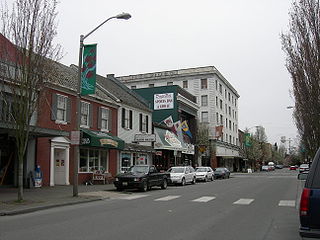
Mount Vernon is the county seat of Skagit County, Washington, United States. The population was 35,219 at the 2020 census. It is one of two principal cities of and included in the Mount Vernon-Anacortes, Washington Metropolitan Statistical Area. Downtown Mount Vernon is known for its annual Tulip Festival Street Fair, which is part of the Skagit Valley Tulip Festival. The climate of Skagit County is similar to that of Northern France, with millions of tulips grown in the Skagit Valley. In 1998, Mount Vernon was rated the #1 "Best City in America" by the New Rating Guide to Life in America's Small Cities.

Sedro-Woolley is a city in Skagit County, Washington, United States. It is part of the Mount Vernon–Anacortes, Washington Metropolitan Statistical Area and had a population of 12,421 at the 2020 census. The city is home to North Cascades National Park.
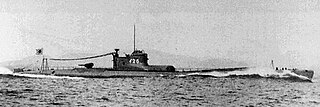
I-25 (イ-25) was a B1 type (I-15-class) submarine of the Imperial Japanese Navy that served in World War II, took part in the Attack on Pearl Harbor, and was the only Axis submarine to carry out aerial bombing on the continental United States in World War II, during the so-called Lookout Air Raids, and the shelling of Fort Stevens, both attacks occurring in the state of Oregon.
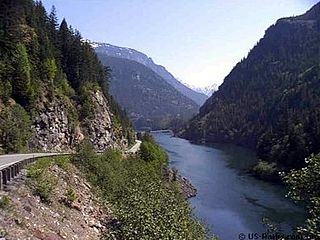
The Skagit River is a river in southwestern British Columbia in Canada and northwestern Washington in the United States, approximately 150 mi (240 km) long. The river and its tributaries drain an area of 1.7 million acres (690,000 hectares) of the Cascade Range along the northern end of Puget Sound and flows into the sound.
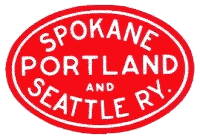
The Spokane, Portland & Seattle Railway (SP&S) was a railroad in the northwest United States. Incorporated in 1905, it was a joint venture by the Great Northern Railway and the Northern Pacific Railway to build a railroad along the north bank of the Columbia River. Remnants of the line are currently operated by BNSF Railway and the Portland and Western Railroad.
Richard Read is a freelance reporter based in Seattle, where he was a national reporter and bureau chief for the Los Angeles Times from 2019 to 2021. A two-time Pulitzer Prize winner, he was a senior writer and foreign correspondent for The Oregonian, working for the Portland, Oregon newspaper from 1981 to 1986 and 1989 until 2016.
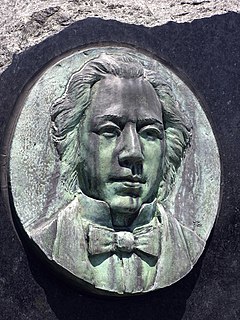
Ranald MacDonald was the first native English-speaker to teach the English language in Japan, including educating Einosuke Moriyama, one of the chief interpreters to handle the negotiations between Commodore Perry and the Tokugawa Shogunate.

The Skagit Valley lies in the northwestern corner of the state of Washington, United States. Its defining feature is the Skagit River, which snakes through local communities which include the seat of Skagit County, Mount Vernon, as well as Sedro-Woolley, Concrete, Lyman-Hamilton, and Burlington.

The Upper Skagit Indian Tribe is a federally recognized Native American tribe located in the state of Washington. Before European colonization, the tribe occupied lands along the Skagit River, from as far downstream as present-day Mount Vernon, Washington, and villages going north as far as Newhalem along the Skagit River, as well as lands on the Baker, and the Sauk rivers.
William Overton was a pioneer of the Oregon Country in the Pacific Northwest region of North America. In the mid-1840s he purchased the land claim, along with Asa Lovejoy, for the site which would become Portland, Oregon. Overton sold his share shortly thereafter to Francis Pettygrove.

Qualchan was a 19th-century Yakama chieftain who participated in the Yakama War with his cousin Kamiakin and other chieftains.

The Puget Sound region is a coastal area of the Pacific Northwest in the U.S. state of Washington, including Puget Sound, the Puget Sound lowlands, and the surrounding region roughly west of the Cascade Range and east of the Olympic Mountains. It is characterized by a complex array of saltwater bays, islands, and peninsulas carved out by prehistoric glaciers.
William Dietrich is an American novelist, non-fiction writer, journalist, and college professor. His historical novels and thrillers have made bestseller lists and his Ethan Gage series, set during the Napoleonic wars, have sold in 28 languages. He has also written novels set in the Roman Empire, Antarctica, and Australia. His non-fiction works are natural history and environmental history of the Pacific Northwest.
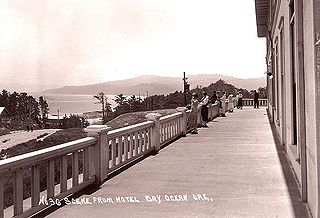
Bayocean was a community in Tillamook County, Oregon, United States. Sometimes known as "the town that fell into the sea", it was a planned resort community founded in 1906 on Tillamook Spit, a small stretch of land that forms one wall of Tillamook Bay.

The Bombardment of Ellwood during World War II was a naval attack by a Japanese submarine against United States coastal targets near Santa Barbara, California. Though the damage was minimal, the event was key in triggering the West Coast invasion scare and influenced the decision to intern Japanese-Americans. The event also marked the first shelling of the North American mainland during the conflict.

Henry Bailey was a sternwheel steamboat that operated on Puget Sound from 1888 to 1910. The vessel was named after Henry Bailey, a steamboat captain in the 1870s who lived in Ballard, Washington.
Chehalis was a sternwheel steamboat that ran on the Chehalis River, Puget Sound, and Lake Washington from 1867 to 1882. This vessel should not be confused with other steam vessels named Chehalis.
Daisy was a sternwheel steamboat that ran on Puget Sound and the Skagit River from 1880 to 1897.

The following works deal with the cultural, political, economic, military, biographical and geologic history of pre-territorial Oregon, Oregon Territory and the State of Oregon.

Nelson Bennett was a Canadian-American railroad magnate who contributed to the growth of Fairhaven and Tacoma, Washington in the late 19th-century. Bennett was president of the Fairhaven and Southern Railroad, which first connected the Bellingham Bay region with the rest of the country.














